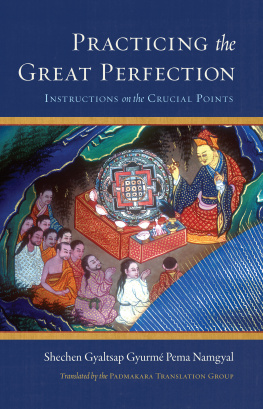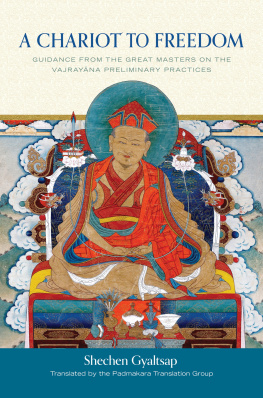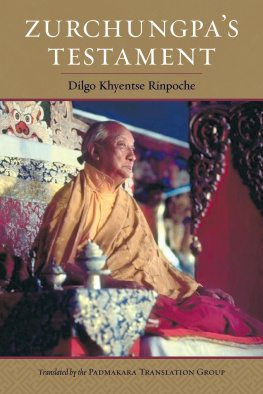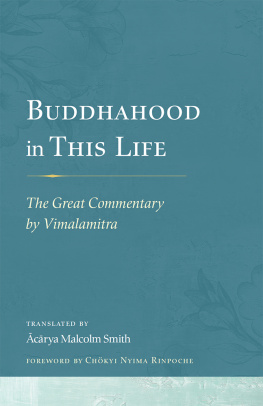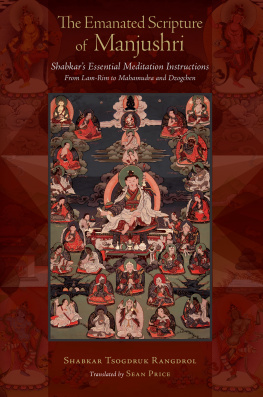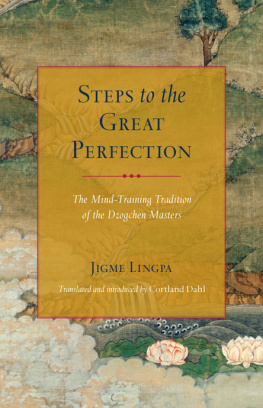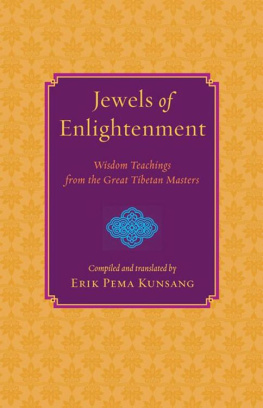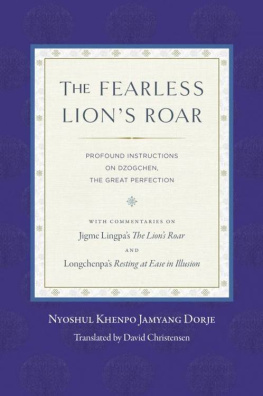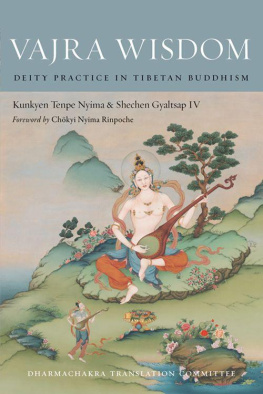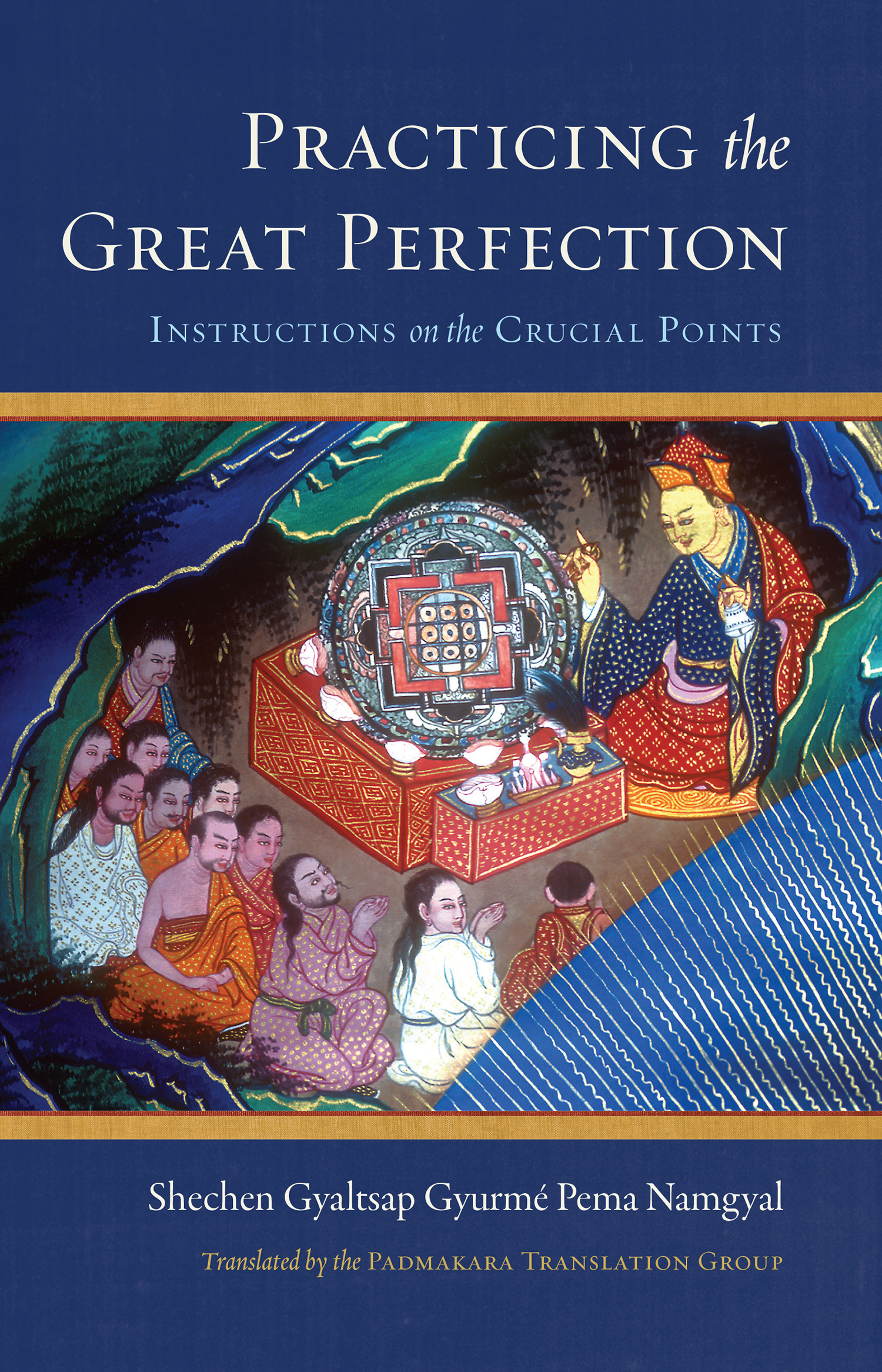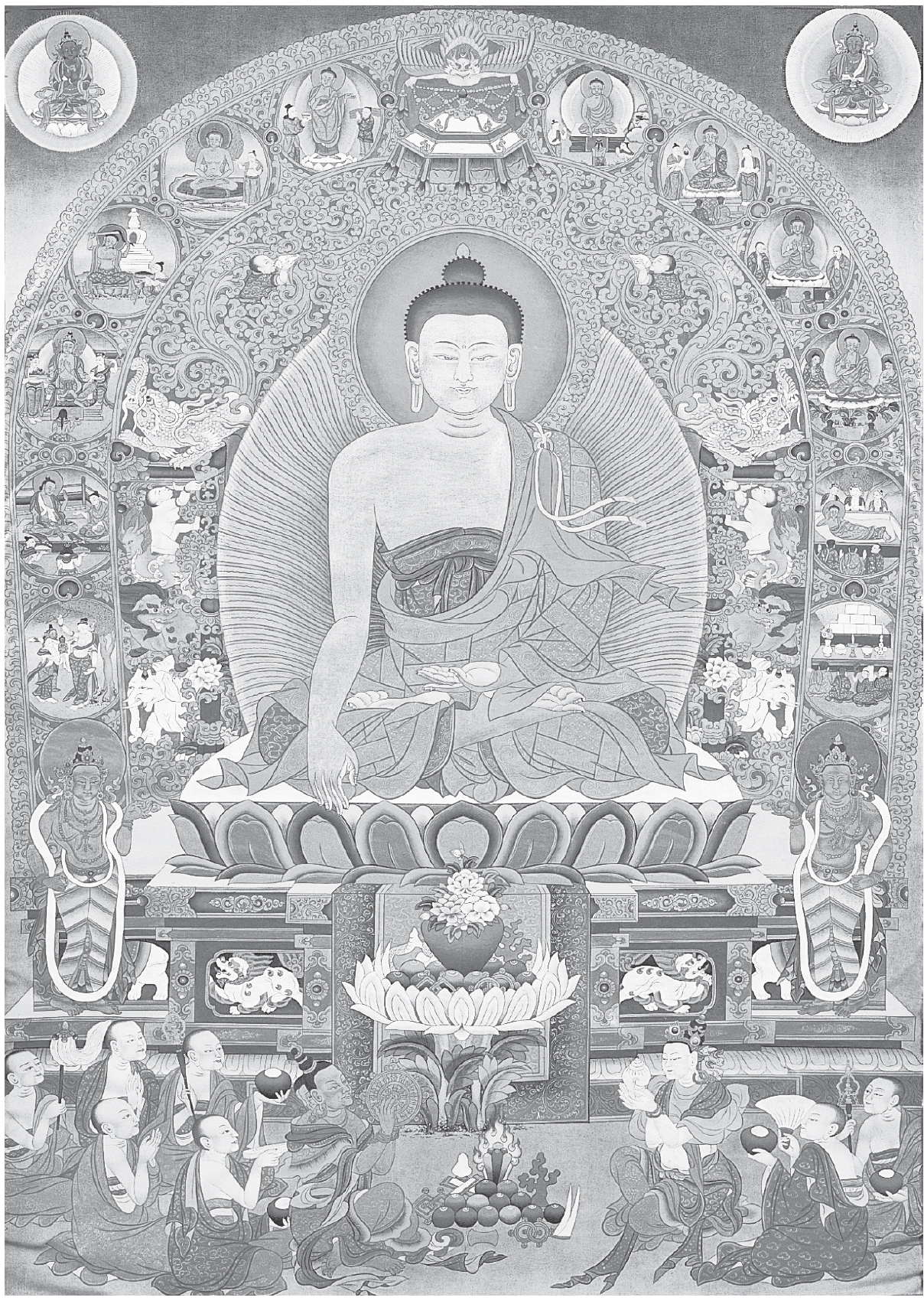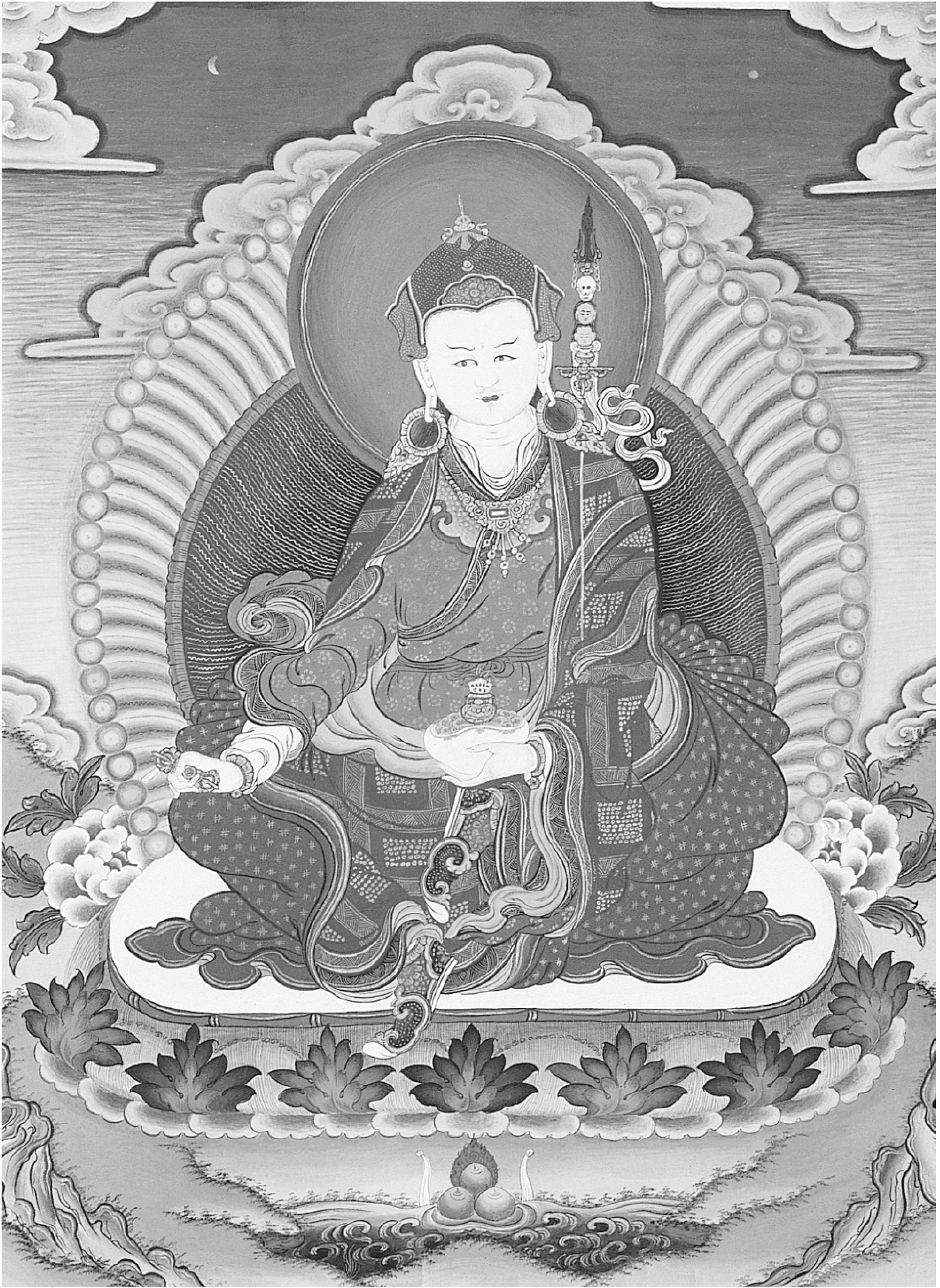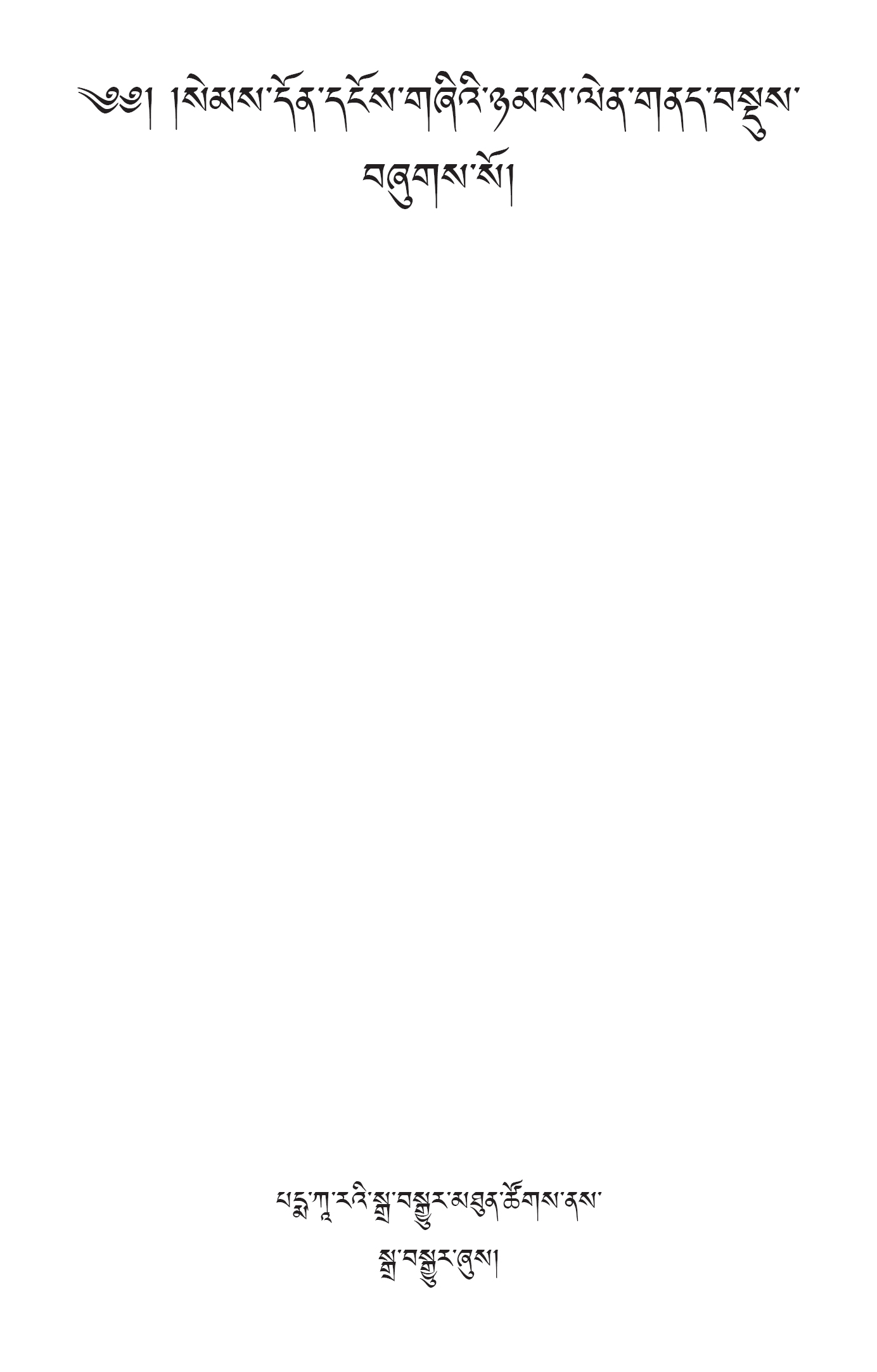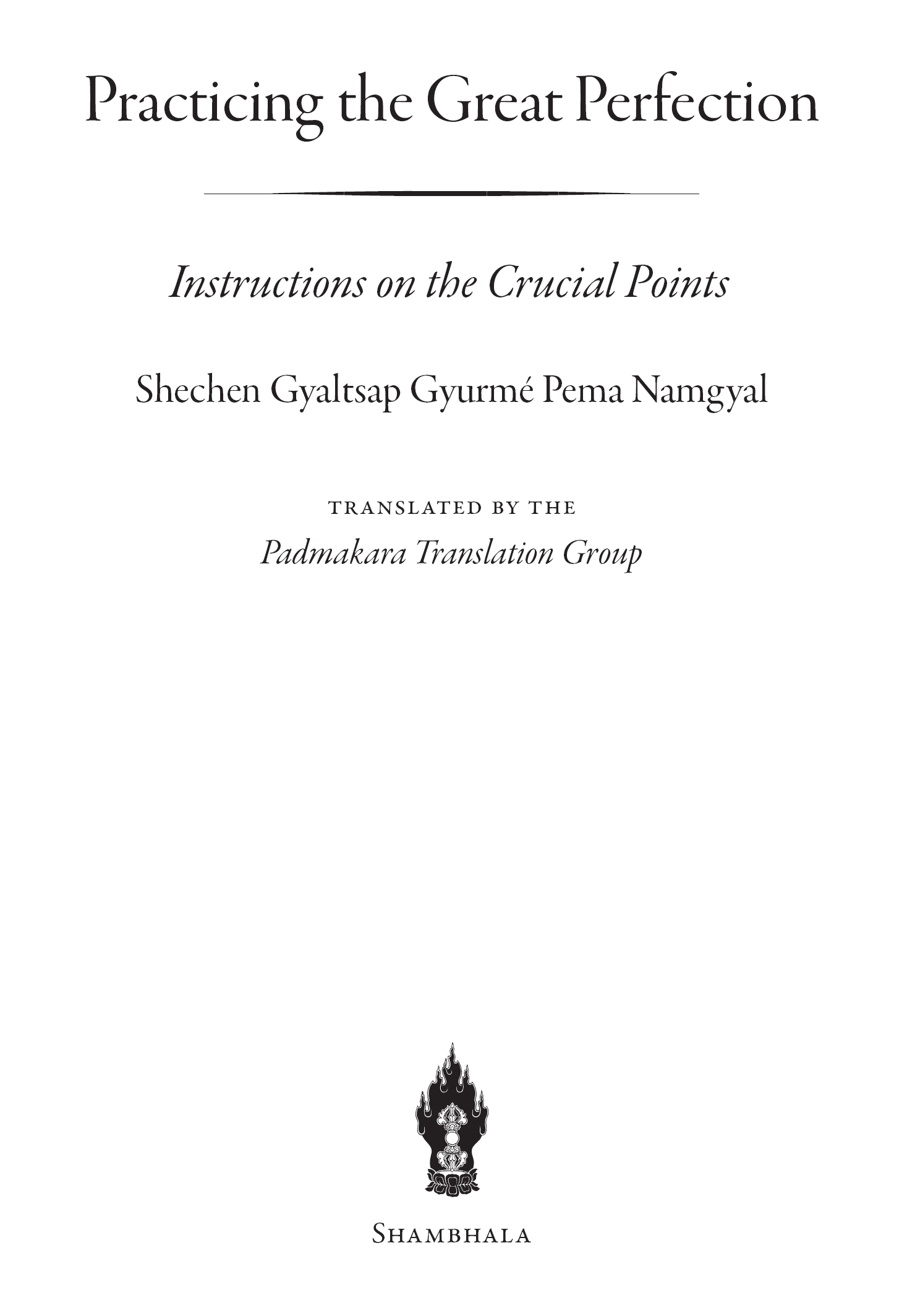The Padmakara Translation Group gratefully acknowledges the generous support of the Tsadra Foundation in sponsoring the translation and preparation of this book.
Shambhala Publications, Inc.
Cover art: Guru Rinpoche giving an initiation in a cave. Detail from a set of late nineteenth-century thangkas depicting the eight aspects of Guru Padmasambhava. Photograph by Matthieu Ricard. Used with permission.
All rights reserved. No part of this book may be reproduced in any form or by any means, electronic or mechanical, including photocopying, recording, or by any information storage and retrieval system, without permission in writing from the publisher.
Names: Gyaltsap, Shechen, author. | Comit de traduction Padmakara.
Title: Practicing the great perfection: instructions on the crucial points / Shechen Gyaltsap Gyurm Pema Namgyal; translated by the Padmakara Translation Group.
Description: Boulder, Colorado: Shambhala, 2020. | Includes bibliographical references and index.
Subjects: LCSH : Rdzogs-chen. | Rnying-ma-pa (Sect)Texts. | PerfectionReligious aspectsBuddhism.
F OREWORD
Reading these mind teachings of the most precious and kind master Shechen Gyaltsap Gyurm Pema Namgyal brings back such powerful memories of the way Kyabje Dilgo Khyentse Rinpoche, my beloved grandfather and root teacher, used to explain the illusory nature of the self, undermining our ego-clinging, as a means to introducing us to the nature of the mind. Of course, the striking similarity of approach is not surprising when one remembers the unfathomable devotion that Khyentse Rinpoche had throughout his life for Gyaltsap Rinpoche, his root teacher.
When Khyentse Rinpoche was little more than thirteen years old, Gyaltsap Rinpoche introduced him to the nature of his mind, using verses taken from the Prayer to Guru Rinpoche in Seven Chapters, in particular the words,
Outwardly, the things that are perceived are pure.
Inwardly, the mind itself perceiving them is free and open.
Between these two, just recognize the state of luminosity.
Through compassion of the Buddhas, past, present, and to come,
May our minds be blessed and freed.
Saying this, and with his hand in the mudra of subduing phenomenal appearances, Gyaltsap Rinpoche looked directly at Khyentse Rinpoche and with a solemn and impressive voice asked three times, What is your mind? And at that moment, Khyentse Rinpoche had the unshakable conviction that his teacher was Guru Rinpoche in person. Rinpoche once told me that, out of respect for his root master, he would never dare to use these same verses to introduce his own students to the nature of the mind.
I am extremely grateful that Helena and Wulstan, both close disciples of Dilgo Khyentse Rinpoche, have given us this beautiful, limpid, and inspiring translation of these precious teachings. We have been given a priceless treasure. It is now up to us to put it into practice.
The Seventh Shechen Rabjam
Shechen Monastery, Nepal, May 2019
T RANSLATORS I NTRODUCTION
Shechen Gyaltsap Gyurm Pema Namgyal, the author of this short collection of essential instructions, was born in the iron sheep year of the fifteenth sexagenary cycle (rabjung) (1871) in the region of Derg, in Eastern Tibet. He received his birth name from his father, Adro Sherab, a hidden yogi of high accomplishment. Even if he were to be examined a hundred times, Jamyang Khyentse Wangpo declared, no error would be found. He was duly enthroned and received the name Gyurm Pema Tendzin Khedrup Gyatsoi D. Later, on receiving his first monastic vows from Dzogchen Khenpo Damch zer, he was given the name Gyurm Pema Namgyal, by which he is more generally known.
As one might expect, Shechen Gyaltsaps birth and early youth were attended by numerous auspicious signs. In particular, it is recorded that the bodhisattva instinct and the habits of compassion were so strong in him that from his earliest years, far from ever consuming meat, he could not bear even its taste or smell. Dilgo Khyentse Rinpoche records that simply to drink soup made in vessels that had been used to cook meat would, it seems, produce an allergic reaction in his mouth. This may well have been regarded as one of the authenticating signs of his identity since it was recorded that the previous incarnation had often remarked on the faults of eating the flesh of animals slaughtered for food, the consumption of which he considered to be the cause of the illnesses that were to shorten his life. In any case, like the famous Shabkar Tsogdruk Rangdrol and Patrul Rinpoche before him, Shechen Gyaltsap abstained from meat throughout his life, and this was no mean accomplishment in the cold highlands of Kham, where the only alternative foods were dairy products, tsampa flour made from roasted barley grains, and the sparse vegetables imported from lower, more fertile regions.
Shechen Gyaltsap received full ordination from Gemang Khenpo Ynten Gyatso, otherwise known as Khenpo Ynga, the author of the celebrated three-volume commentary on Jigme Lingpas Treasury of Precious Qualities. Natural inclination disposed him to monastic discipline, and he maintained a lifelong and utterly unblemished observance of the vows. Having gone forth into homelessness, to use the traditional expression, it is said that he never again crossed the threshold of a laypersons house. His life henceforth consisted of study, teaching, and prolonged meditative practice.
Endowed with a keen intelligence, a prodigious memory, and a natural inclination to study, he immersed himself in the world of Tibetan scholarship and practice, which in his day had been brought to vigorous life by the

